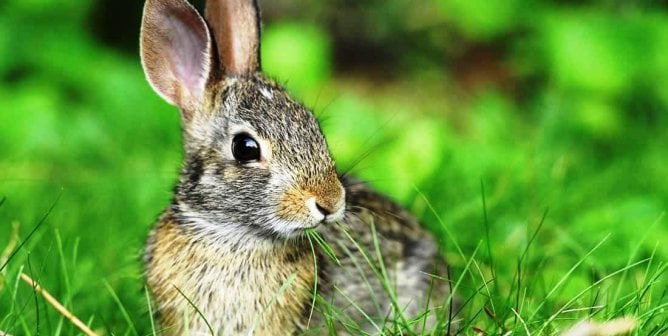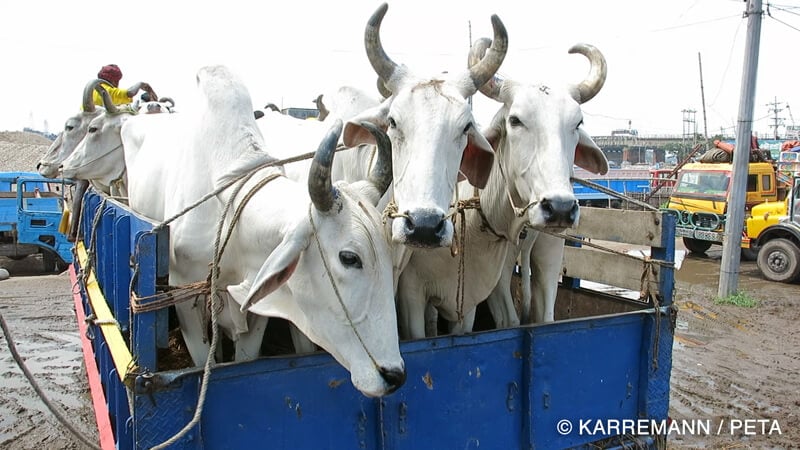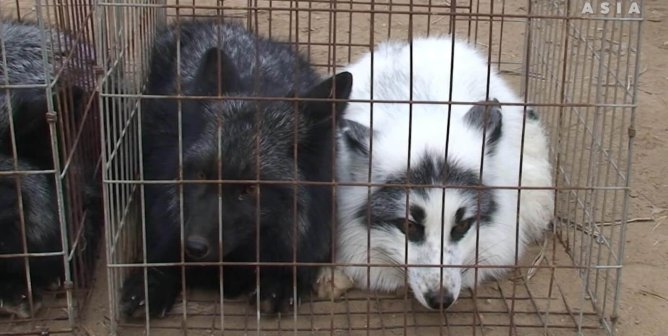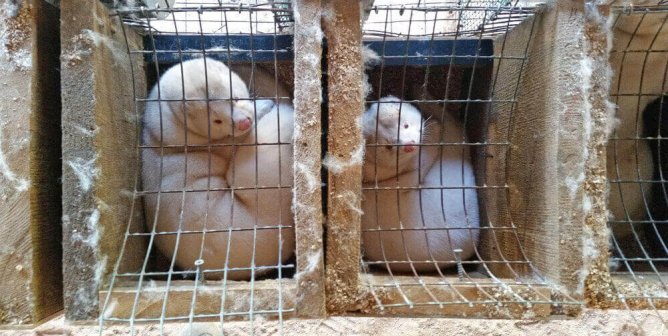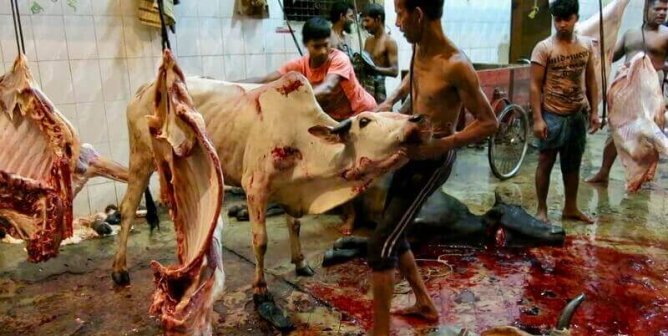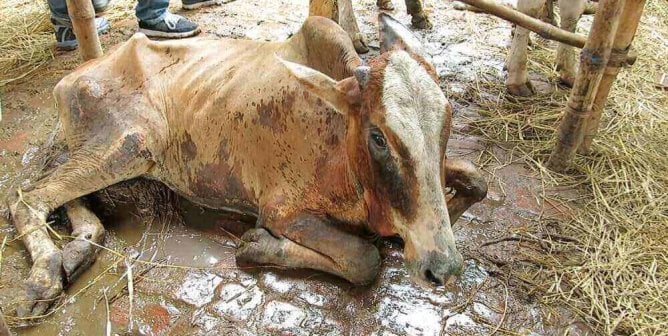Animals Used for Fur
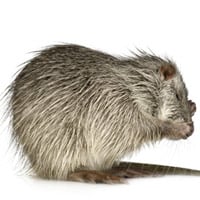
Beavers
Beavers are extremely gentle, family-oriented animals who partner for life and remain lifelong friends with their offspring. The second-largest rodent in the world, the beaver can live 19 years, reach 60 pounds, and grow up to 4 feet long. Baby beavers, or “kits,” are usually born to hard-working, loving parents who have been together for many years. Female beavers are especially busy as they care for their young while looking after their rambunctious “teenagers.”
Read more
Beavers are master architects—their complicated, well-built lodges can stand for years. These “busy beavers” take pride in their work and are constantly concerned with repairs to their homes. Beavers’ activity helps keep stream beds healthy and in good repair, and beavers are a keystone species in an ecosystem because they create wetlands that are used by many other species.
When startled or frightened, a swimming beaver will rapidly dive while forcefully slapping the water with his or her broad tail. This creates a loud sound, audible over large distances above and below water, which serves as a warning to other beavers in the area. Once a beaver has made this danger signal, all nearby beavers will dive and may not reemerge for some time. At one point in time, these industrious, clever animals were hunted and trapped nearly to extinction. Beavers today are still in constant danger of being caught in traps.
The body-gripping traps used to capture and kill beavers cause these sensitive animals immeasurable suffering. In many cases, Conibear (body-gripping) traps fail to catch the animals quickly or on target. If the traps do not kill the beavers immediately, they can slowly drown, suffering for up to 20 minutes. Death by drowning is extremely cruel—the American Veterinary Medical Association (AVMA) condemns it in its 2000 Report of the AVMA Panel on Euthanasia.
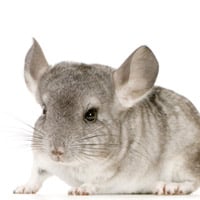
Chinchillas
Chinchillas are shy, intelligent animals who eat vegetables and fruits and can live up to 15 years in the wild. Social “chatterboxes,” these sensitive nocturnal animals can spend all night long “talking” to one another. Fastidiously clean, they require frequent dust baths to care for their extremely dense fur. These “fluff fests” also provide invaluable moments of comfort and entertainment—moments that are denied caged chinchillas who are cruelly “farmed” for their fur.
Read more
Originally found only in South America in communities of up to 100 members, chinchillas are now bred by fur farmers or pet store distributors who then sell them as “pets” to often ill-informed people. Captive chinchillas live for around 15 years, but some have been known to live up to 20 years or more. Chinchillas are naturally skittish. They also have delicate bones and generally dislike being held.
Chinchillas express themselves with a variety of vocalizations, including barks, chirps, and squeaks. They can make calm, loving chirps for potential partner as well as loud, aggressive barks when spooked. Active and inquisitive by nature, chinchillas need to exercise and satisfy their curiosity—two activities that are denied them on fur farms.
The demand for chinchilla fur has resulted in their near extinction. On a fur farm in Midland, Michigan, PETA investigators observed that chinchillas were suffering from painful seizures after being electrocuted or having their necks broken while they were still conscious.

Dogs and Cats
“Man’s best friend” killed for fur? It’s not just a bad dream. PETA’s recent undercover investigation into the Chinese dog and cat fur trade revealed what the industry is so desperate to hide. Even our veteran investigators were horrified at what they found: Millions of dogs and cats in China are bludgeoned, hanged, bled to death, and strangled with wire nooses so that their fur can be turned into trim and trinkets.
Read more
Dog and cat fur is often deliberately mislabeled as fur from other species and is exported to countries throughout the world to be sold to unsuspecting consumers. China supplies more than half of the finished fur garments imported for sale in the U.S. So, if you’re buying fur, there’s no way to tell exactly whose skin you’re wearing.
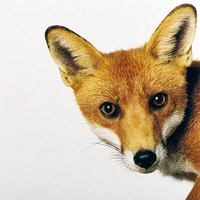
Foxes
Foxes are intelligent nocturnal animals who rely on their big bushy tails to spread scent in order to communicate. Foxes usually survive by eating fruit, berries, roots, carrion, rats, and slugs. Foxes play an important ecological role, as they “clean” the environment, and their survival often depends upon the amount of available food in their territories. They bury food and have a very good sense of hearing, picking up sounds of small animals in the grass, underground, or under the snow. They have a keen sense of smell and will hunt from dusk to dawn.
Read more
Although they usually live only one to two years, foxes have been known to survive nine years if left alone by humans, their sole predator. Foxes can run at speeds of up to 26 miles per hour and will run along logs, double back, or wade in water so that hunters’ dogs cannot follow their scent; they will also warn others with a sharp bark. Female foxes work together to care for their families’ babies, and young foxes ultimately learn how to take care of themselves through play.
Unfortunately, many young foxes are not given this opportunity to learn from their mothers’ and aunts’ gentle nudging. Instead, they are raised on factory farms in tiny, filthy wire cages. Many of these foxes live for years in hideous conditions before farmers kill them and sell their fur to make coats, cuffs, collars, and trim. Others are caught in steel-jaw traps, which crush their legs until trappers arrive to beat them to death hours or days later. In many parts of the country, frantic foxes are pursued by starved hunting dogs for “sport.” Once the dogs catch up to them, they tear the terrified foxes limb from limb.
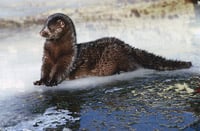
Minks
Sometimes called “marsh otters,” minks love to swim (aided by their slightly webbed hind feet) and are often found near water. They can swim to depths of 50 feet underwater on just one breath. In the wild, minks are generally territorial and solitary and often travel long distances, sometimes using the dens of other animals as “hotel pit stops.” Minks prefer habitats that provide good cover—such as grass, brush, trees, and aquatic vegetation—and they make their dens in cavities in brush or rock piles, logjams, and exposed roots of trees.
Read more
Minks raised and killed on fur factory farms are forced to live in small, dirty, barren cages and are denied any opportunity to swim; this causes them untold stress by suppressing their natural urges. Cramped wire cages prevent minks from indulging their innate desire to roam, and factory-farmed minks are often seen bobbing their heads and pacing—neurotic, repetitive behavior that is a sign of severe psychological distress.
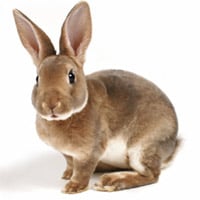
Rabbits
Rabbits are extremely social animals who live with their families in underground burrows called “warrens.” They can hop faster than a cat, human, or white-tailed deer can run. Rabbits love nibbling on alfalfa, timothy hay, apples, carrots, and crisp, green veggies, and they chew vigorously to trim their front teeth, which never stop growing. They communicate through body language, marking their territories like cats by rubbing their chins on twigs, rocks, or other landmarks.
Read more
People who have adopted domestic rabbits from animal shelters know that they can be extremely affectionate, snuggling with their human companions and gently nuzzling their necks. Rabbits are sensitive, smart animals with individual personalities, just like dogs and cats. They make lifelong bonds with other rabbits and humans, play with toys, and can even learn to use litterboxes.
About a billion rabbits are killed yearly for their skins, as many as 70 million in France alone. Like other animals who are farmed for their fur, rabbits—who are extremely clean by nature—are kept in tiny, filthy cages, surrounded by their own waste. They spend their entire miserable lives standing on the thin cage wires that constantly cut into their sensitive footpads, never having a chance to dig, jump, or play. Fur farmers kill rabbits using cruel methods—breaking their necks or beating in their skulls—before stringing them up by the legs and cutting off their heads.

Raccoons
Raccoons can be recognized by their beautiful eyes, which are outlined by a black mask of fur. They have thick, fuzzy brown-gray fur, and highly sensitive ears tufted with white fur. Those who live in humid, dense forests have darker fur than those in arid climates, where raccoon fur is a lighter, reddish color. Their bushy tails keep them balanced and stores fat during winter months, while their front limbs provide them with great manual dexterity.
Read more
Raccoons are omnivores and eat frogs, fish, eggs, fruits, nuts, insects, and grain, among other things. Although they are primarily nocturnal, raccoons are often seen frolicking during the day when they haven’t detected a human’s presence. They are intelligent animals (often figuring out the most complicated locks) who, sadly, have had to adapt to the loss of their habitat because of human development. They will make their nests almost anywhere—in tree cavities, brush piles, abandoned burrows, chimneys, attics, and barn lofts—and usually have more than one den. They have routines for finding food and shelter, and they can plot out and remember different hiding places for each. In the wild, raccoons can live seven years or longer.
Raccoons’ lives are often cut short by cruel humans who covet their fur. Like foxes, raccoons are hunted by starved dogs and often suffer in steel-jaw traps, where they endure hours of agony before they are killed—or chew an arm or leg off in an effort to escape.
Seals
For thousands of years, harp seals have migrated from Greenland down the coast of Canada, stopping each spring to give birth on the ice floes. Female harp seals give birth to one pup each year.
Read more
Seal pups are born with silky white fur, which they molt around two weeks of age. Mothers and pups form a very strong bond and recognize each other by sound and smell. Female seals nurse their pups for a few days before going out to sea to feed, leaving the pup in a nursery group or a protected area for three to five days. When the mothers return, they call their pup with a distinctive bark that the pup will answer.
Thousands of the mothers return from feeding to find that their pup has been murdered during the Canadian seal slaughter. During this slaughter, tens of thousands of seals are bludgeoned and skinned so that their fur can be turned into fur coats.
Bears
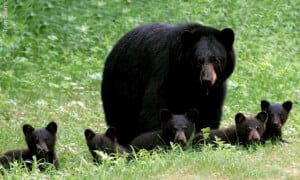
For nearly two centuries, Britain’s Ministry of Defence (MoD) has waged a war on black bears, subsidizing the slaughter of hundreds of these animals in Canada and using their pelts to make headpieces for The Queen’s Guards.
Bears are cruelly killed for their hides; they are either shot during hunts or ensnared, sometimes for days, in painful traps. The Ontario Ministry of Natural Resources reports that during hunts, as many as one bear in seven is not killed immediately after being shot, and some escape wounded, often dying later from blood loss, gangrene, or starvation.
Read more
Mother bears who are killed leave behind orphaned cubs who are completely dependent on them for food during their first 17 months. When left alone in the wilderness, the cubs often cannot survive. In many areas, there are few restrictions against shooting mother bears with nursing cubs, leading to the destruction of entire families.
It is common for bears to be hunted at bait sites. Food is left regularly for hungry bears so that they will become accustomed to going to the same spot to find food. Hunters then hide in tree stands and shoot at the bears who come looking for their regular meal.
Although the MoD has acknowledged that it is time for a change, it has delayed taking any action. It is inexcusable that the same army which is capable of building some of the most sophisticated equipment and machinery in the world claims it is unable to find a synthetic replacement for bearskins after almost three decades of “searching” and despite the wide availability of luxurious synthetic materials. Meanwhile, it is money from buyers such as the British Army that keeps hunters making profits from killing these animals. Bears aren’t crops to be “harvested”; they are individuals who live in families and feel pain and terror when shot.

